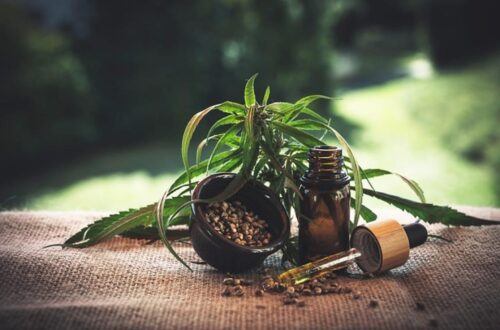Ever wondered how your morning coffee gets its bold flavor, or how essential oils capture the essence of plants? The magic lies in the extraction method. Whether it’s brewing the perfect cup or making natural remedies, the technique matters.
Extraction methods can vary widely. From simple boiling to sophisticated machinery, each method has its pros and cons. Some techniques maintain purity, while others maximize yield.
Understanding these differences is crucial, especially if you want to replicate the process or select the best product. So, grab a cup of tea (or coffee!) and let’s dive into the fascinating world of extraction methods, exploring which might be the best fit for you!
Introduction to Different Extraction Methods
Extraction methods are the techniques used to separate a desired substance from a mixture. Let’s explore a few common ones and understand how they work.
Solvent Extraction
This method uses solvents, like ethanol, to dissolve the desired compound. It’s commonly used for essential oils and pharmaceuticals. The solvent is then evaporated, leaving behind the pure extract. This method can be quick but may not be the best for preserving delicate compounds.
Steam Distillation
Ideal for extracting essential oils, steam distillation involves passing steam through plant material. The steam carries essential oils with it, which are then condensed and collected. This method is known for capturing the pure, aromatic essence of plants.
Cold Pressing
Often used for citrus oils, cold pressing mechanically presses the plant material to release oils. This method doesn’t involve heat, preserving the natural properties of the extract. While efficient, it’s mostly suitable for oil-rich plants.
Supercritical CO2 Extraction
Supercritical CO2 acts as a solvent to pull out essential compounds at specific temperatures and pressures. It’s incredibly precise and effective, often used for high-quality extractions like CBD oil. Though costly, it yields a clean and potent product.
Each of these methods has its unique advantages and challenges. Understanding them can help you choose the best method for your needs.
The Importance of Choosing the Right Extraction Method
Choosing the right extraction method is crucial for several reasons. The method you select can significantly impact the quality and purity of your final product.
Different compounds respond better to different extraction techniques. Some methods are gentle and preserve delicate compounds, while others may be more efficient but harsher.
Consider the end use of your extract. Are you looking for a highly concentrated product, or is it more important to maintain the natural properties of the substance? This will guide your choice in method.
Efficiency is another critical factor. Some methods yield more extract with less waste, saving time and resources. However, these methods might require more specialized equipment and expertise.
Lastly, think about the cost. Some extraction methods are expensive and might not be feasible for small-scale operations. Balancing cost with desired quality will help in making an informed decision.
By carefully considering these factors, you can select the best extraction method to suit your needs and produce the best possible product.
Comparing Efficiency and Yield Across Extraction Techniques
When it comes to extraction techniques, efficiency and yield often steal the spotlight. They can vary greatly depending on the method used, so let’s dive into some comparisons.
Solvent Extraction
Solvent extraction is popular for its high efficiency. It uses chemical solvents to pull out the desired compounds. However, it often requires additional steps to remove the solvent, which could affect the overall yield and purity.
Steam Distillation
Steam distillation, on the other hand, is favored for more delicate compounds. While it may not be as efficient as solvent extraction, it often retains more of the natural properties. This method typically yields a purer product but in smaller quantities.
Supercritical CO2 extraction strikes a fine balance between efficiency and yield. It uses carbon dioxide at high pressure and low temperature, ensuring minimal loss of valuable compounds. Though it requires specialized equipment, it often delivers high yields with impressive quality.
Mechanical extraction methods like cold pressing are simple and cost-effective. They may not offer the highest efficiency, but they preserve the natural qualities of the extract. This method is ideal for those who prioritize maintaining the raw essence of their material.
By comparing these different methods, you can better understand the trade-offs between efficiency and yield, helping you choose the best technique for your needs.
Assessing the Quality of Extracts from Various Methods
Quality assessment of extracts is crucial because it determines their effectiveness and safety. Different extraction methods can yield varying levels of quality based on several factors.
Purity and Contamination
Purity is one of the primary indicators of quality. Solvent extraction methods often require thorough purification to eliminate residual solvents. On the flip side, methods like steam distillation are less likely to introduce contaminants but must be carefully managed to avoid degradation of sensitive compounds.
Supercritical CO2 extraction stands out for delivering high-purity extracts since the CO2 easily evaporates, leaving minimal residues. This method often requires less post-processing compared to solvent extraction, making it a top choice for those aiming for clean, high-quality products.
When evaluating extracts from mechanical methods like cold pressing, you’ll find they typically have fewer contaminants. However, they may contain more particulate matter, which could affect the clarity and shelf-life of the extract. Some prefer this method for its simplicity and natural approach.
Consistency and Stability
Consistency is another vital factor, especially for products used in pharmaceuticals or cosmetics. Solvent and supercritical CO2 methods usually offer more consistent results, crucial for quality control.
Stability matters too. Some extracts degrade quickly if not processed correctly. Using gentle methods like cold pressing helps maintain the natural stability of oils and other sensitive compounds, but may require added preservatives for longer shelf life.
By understanding how different extraction techniques affect quality, you can make better-informed choices that align with your specific needs and standards. This ensures you get the best possible end product, whether you’re manufacturing at scale or creating artisanal batches.
Understanding the Cost and Labor Requirements of Each Method
When it comes to selecting an extraction method, understanding the associated costs and labor can make a big difference, especially if you’re working within a budget.
Equipment Investment
Solvent extraction typically has a middle-ground investment for equipment. While it’s not the cheapest, it’s also not the most expensive. However, because it involves the use of chemicals, there might be additional costs for safety measures and compliance with regulations.
On the higher end, supercritical CO2 extraction requires significant upfront investment in specialized equipment. The machinery is advanced and can be costly but it offers long-term benefits by reducing the need for extensive post-processing and delivering top-tier quality.
Cold pressing, being one of the simplest methods, usually involves minimal upfront costs. You might only need a press and supportive filtration systems, making it a low-cost option for small-scale operations or DIY enthusiasts.
Labor Intensity
Different methods vary in labor requirements. For instance, solvent extraction can be labor-intensive due to the need for careful handling and post-processing like solvent removal and purification.
Supercritical CO2 extraction, while equipment-intensive, automates a lot of the process, thus reducing the need for manual intervention. Despite this, skilled technicians are often required to operate and maintain this sophisticated equipment, potentially increasing labor costs.
Cold pressing involves straightforward mechanical action, making it relatively easy to manage. But, manual handling is essential, especially if dealing with large quantities, which could increase labor hours.
Operational Costs
Operational costs also differ significantly. Solvent and CO2 methods might incur higher utility costs due to energy consumption and the need for controlled environments. Cold pressing, being a more mechanical process, generally has lower energy requirements but might need frequent maintenance checks.
By weighing the costs and labor required for each method, you can align your extraction process with both your budget and manpower limits, ensuring a balanced approach to producing high-quality extracts.

Determining Environmental Impact and Sustainability Aspects
Choosing an extraction method isn’t just about cost and labor. We also need to think about the planet. Let’s explore the environmental impact and sustainability of each method.
Solvent extraction often involves using petroleum-based chemicals. These solvents can be harmful if not disposed of properly. This method also requires significant energy to produce and purify the final product, contributing to its carbon footprint.
Supercritical CO2 extraction is generally more eco-friendly. The CO2 used is often recaptured from industrial processes, making it a form of recycling. Plus, CO2 extraction doesn’t leave behind harmful residues and can be designed to be a closed-loop system, minimizing waste and emissions.
Cold pressing is the greenest option of the three. It uses minimal energy and no harmful chemicals. This method is more sustainable because it requires only mechanical force, leading to less environmental degradation.
Considering the environmental impact helps us choose methods that are not only effective but also kind to the Earth. Balancing efficiency and eco-friendliness brings us a step closer to sustainable production practices.
Conclusion: Selecting the Optimal Extraction Method for Your Needs
Choosing the right extraction method comes down to balancing several factors, including quality, cost, and environmental impact. Each method—solvent extraction, supercritical CO2 extraction, and cold pressing—has its own set of advantages and drawbacks.
Solvent extraction can be cost-effective and efficient, but it raises concerns about chemical residues and environmental harm. Supercritical CO2 extraction, on the other hand, offers high-quality yields and a cleaner process but requires a larger upfront investment. Cold pressing stands out for its simplicity and eco-friendliness, yet it may not be suitable for all products due to lower efficiency in extracting certain compounds.
Ultimately, your choice will depend on what matters most to you and your production goals. Are you leaning toward a more sustainable approach? Cold pressing might be your best bet. If you’re after higher yields and can handle the initial costs, supercritical CO2 could be the way to go. If budget constraints are your primary concern, solvent extraction might still be viable, provided you manage its environmental impacts responsibly.
By carefully weighing these aspects, you can select an extraction method that aligns with your needs and values. Remember, the right method is not one-size-fits-all but one that fits your unique requirements and objectives. So, take your time, evaluate your options, and choose the method that will help you produce the best end product.






